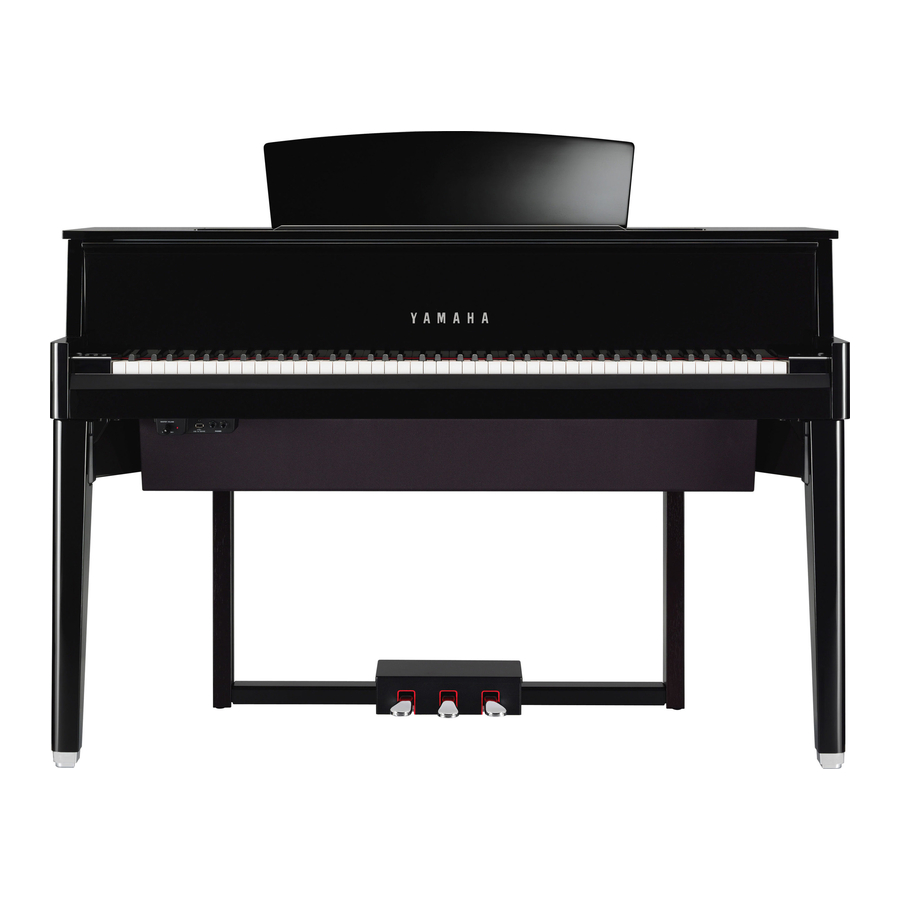Yamaha AvantGrand N1 Manuale d'uso - Pagina 22
Sfoglia online o scarica il pdf Manuale d'uso per Strumento musicale Yamaha AvantGrand N1. Yamaha AvantGrand N1 50.

Basic Operations and More
Scale Tuning
You can select various scales. Equal Temperament is the most common contemporary piano tuning scale. However,
history has known numerous other scales, many of which serve as the basis for certain genres of music. You can
experience the tunings of these genres.
While holding down the [FUNCTION] button, press one of the C5–F#5 keys to
select the scale. Holding down both controls shows the current scale setting.
Display
Key
1
C5
2
C#5
3
D5
4
D#5
5
E5
6
F5
7
F#5
Setting the Base Note for each scale
While holding down the [FUNCTION] button, press one of the C4–B4 keys.
Holding down both controls shows the current base note setting.
Key
Base Note
C4
C
C#4
C#
D4
D
Example:
F~
F#
(Followed by a high bar if sharp)
22 • N1
Owner's Manual
Scale
The pitch range of each octave is divided equally into twelve
Equal
parts, with each half-step evenly spaced in pitch. This is the most
commonly used tuning in music today.
Pure Major
These tunings preserve the pure mathematical intervals of each
scale, especially for triad chords (root, third, fifth). You can hear
this best in actual vocal harmonies — such as choirs and a cap-
Pure Minor
pella singing.
This scale was devised by the famous Greek philosopher and is
created from a series of perfect fifths, which are collapsed into a
Pythagorean
single octave. The 3rd in this tuning are slightly unstable, but the
4th and 5th are beautiful and suitable for some leads.
This scale was created as an improvement on the Pythagorean
scale, by making the major third interval more "in tune." It was
Mean-Tone
especially popular from the 16th century to the 18th century. Han-
del, among others, used this scale.
Werckmeister
This composite scale combines the Werckmeister and Kirnberger
systems, which were themselves improvements on the mean-tone
and Pythagorean scales. The main feature of this scale is that
each key has its own unique character. The scale was used
Kirnberger
extensively during the time of Bach and Beethoven, and even now
it is often used when performing period music on the harpsichord.
C4
B4
Key
Base Note
D#4
Eb
E4
E
F4
F
G
G
F#5
C5
Description
Key
Base Note
Key
Base Note
F#4
F#
A4
G4
G
A#4
G#4
Ab
B4
A_
Ab
(Followed by a low bar if flat)
Default setting: Equal
The scale is restored to the default setting
when the power is turned off.
Default setting: C
The base note is restored to the default set-
ting when the power is turned off.
A
Bb
B
